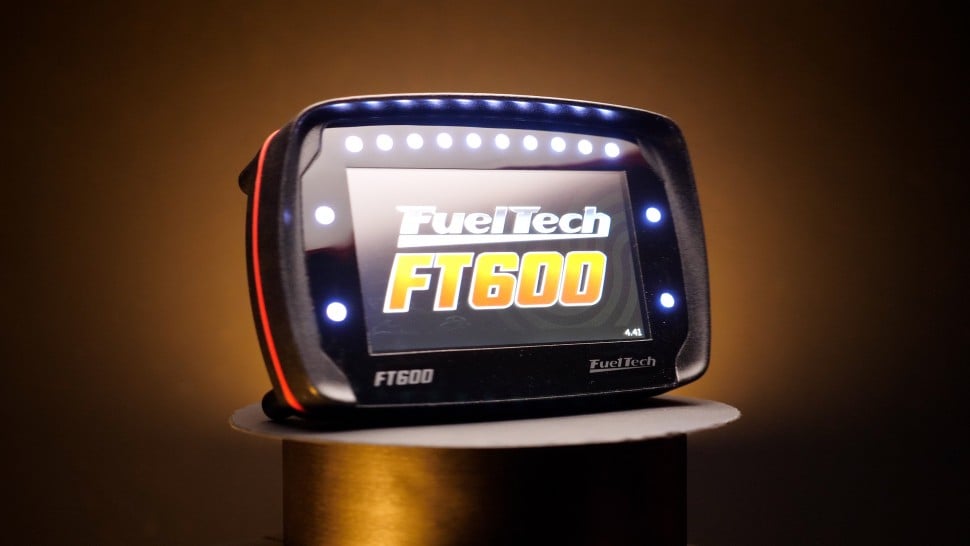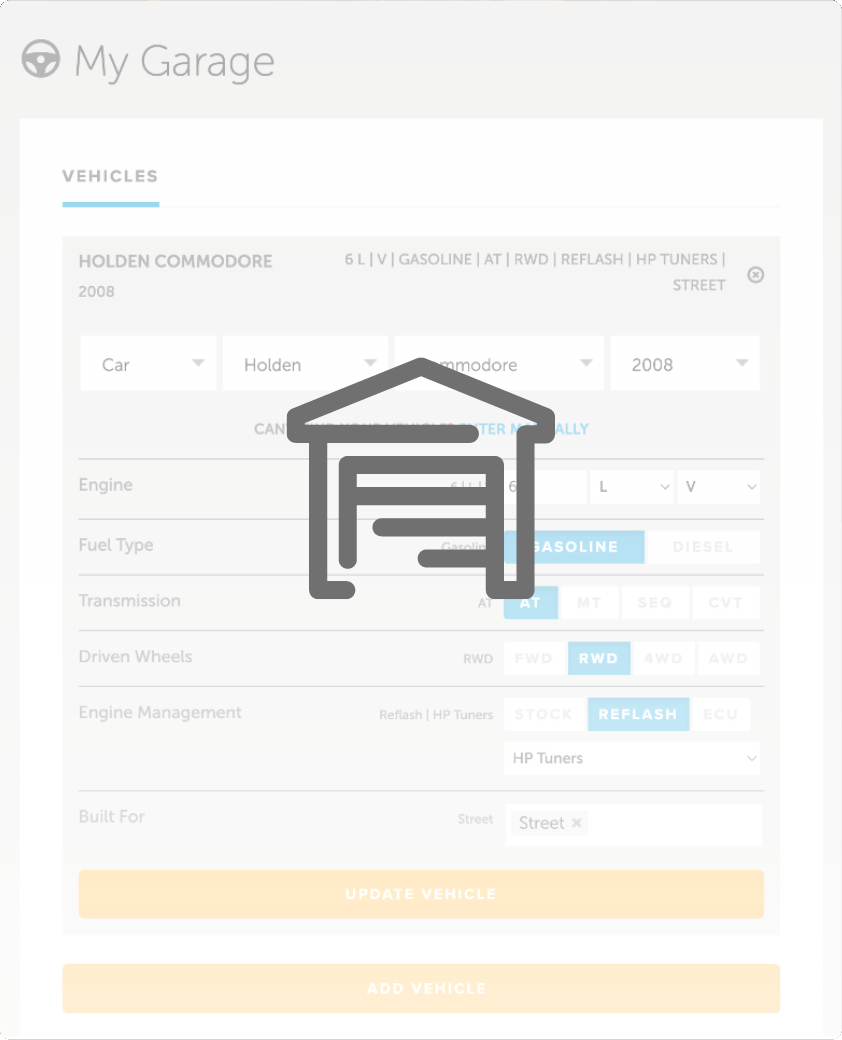| 00:00 |
Previously, in the practical 3D scanning section of the course, we captured a scan, tidied it up a bit, and converted it to a mesh.
|
| 00:07 |
The next step after this is to extract entities from the part, which are the features of the geometry that will help us to create a 3D model.
|
| 00:15 |
We can also use these to align the model with the workplace coordinate system, similar to what we did previously in Peel.OS.
|
| 00:23 |
And this will make things easier moving forward.
|
| 00:26 |
Let's look at reverse engineering.
|
| 00:27 |
This time, looking at an example of a turbo manifold designed for the Mitsubishi Evo 4 through 9 using stock turbo location.
|
| 00:36 |
At this stage, all the cleaning is done and we have our mesh in Peel.CAD, which is the software we'll be using for this job.
|
| 00:43 |
We scanned the manifold following very much the same process as the suspension upright, scanning the part in two different orientations, so we could capture data from all angles, and then merging the two scans using the position targets applied to the flat surfaces.
|
| 01:00 |
We'll be continuing with the upright example in the scan based design section, but it's not really suited to reverse engineering.
|
| 01:07 |
It's unlikely we'd ever want to reproduce it, instead we'd probably just design a new version or use it as a reference when designing other parts, which is scan based design.
|
| 01:17 |
With the manifold on the other hand, we could reproduce it as a design that we know works well, and then make modifications like changing the turbo flange to a V band, or exploring other manufacturing options like casting or 3D printing.
|
| 01:31 |
As we know, having a CAD model opens a lot of other doors like CFD or flow analysis, potentially highlighting areas for improvement.
|
| 01:40 |
I understand that many of you won't have access to this software, or this particular manifold for that matter.
|
| 01:46 |
So, this module will be simply a demonstration of what's possible, and you'll be able to apply the same ideas to whatever scanned objects and software that you have.
|
| 01:56 |
In the coming module we'll share the resulting files so you can fire up CAD and follow along if you want to, and we'll also show you how to extract entities in CAD software.
|
| 02:05 |
So, again don't stress if you don't have access to a dedicated reverse engineering programme.
|
| 02:11 |
To start it's good to understand what entities we'll actually need to be able to recreate this part in CAD.
|
| 02:18 |
In the case of this turbo manifold, there are some very clear geometric features, the flanges that mount to the head and the turbo, and the primary runners connecting them.
|
| 02:28 |
This product is made from 347 stainless and has an investment cast flange and merge collector.
|
| 02:36 |
Clearly there's no need to perfectly recreate the manifold, as we're better off just purchasing this product.
|
| 02:42 |
So, let's explore recreating it for 3D printing, meaning we're not restricted to a perfectly circular cross section for the runners.
|
| 02:51 |
We'll also be able to finish the part with fillets or rounding of the sharp edges to remove any stress concentrations.
|
| 02:58 |
So, we want to extract entities that will allow us to accurately model the flanges with the location of all the mounting holes so we can be sure it'll fit the head and mount the turbo in the same position.
|
| 03:10 |
We'll also extract entities from the runners so we can approximately match the existing shape since we know it works well, but this is an area that we can move on to modify and optimise as well.
|
| 03:21 |
So, in Peel.CAD, in the toolbar, we have this entities tab, and we also have some other mesh editing tools along here.
|
| 03:29 |
So, we're going to start off by selecting add a plane from the entities tab.
|
| 03:34 |
And how we create this plane is based on the measurement method.
|
| 03:38 |
There are a few different options here, we're not going to cover them all though.
|
| 03:41 |
So, some of these options are based on selecting entities that we've already created like other planes, but since we haven't created any yet, we can't really use these.
|
| 03:50 |
Probably the easiest method here is choosing the mesh function , which basically just allows us to select a flat part of the mesh and it will fit a plane to that section.
|
| 04:01 |
So, in the software we can use these different selection tools like rectangular selection, freeform or connect, which basically selects anything connected to the part of the mesh we select, but we've automatically been selected this preference here, which is similar normal.
|
| 04:19 |
So, that will basically select any parts of the mesh that have a similar normal, which means they all share a planar surface.
|
| 04:26 |
For example we'll just rotate this around and then we'll use the control button and then select part of the flange , which mounts to the head.
|
| 04:35 |
You can see that our plane has been automatically fit to that surface.
|
| 04:39 |
Under the constraints tab here, these settings are going to be critical to the planes that we create moving forward, but you need other entities already selected to use these so we're going to come back to this in just a moment.
|
| 04:54 |
If we click OK here then we'll automatically jump back into creating the second plane.
|
| 04:59 |
What we'll do is we'll just rotate this around and we're going to select the other side of this flange and we can select more well divided points that share the same plane and that just gives us a better fit to that surface.
|
| 05:14 |
So, once we're happy with that, what we're going to do this time is choose the normal constraint and then we're going to turn on this derived entities, so we can select plane one and basically what that means is both of these planes now share the same normal direction or in other words they are parallel and we want that because that will clearly be the actual design intent of this flange.
|
| 05:42 |
We'll hit OK and then that will take us into plane three.
|
| 05:46 |
And what we can do here is also do the same process for the other flange.
|
| 05:52 |
In this case we don't want that normal constraint selected though.
|
| 05:58 |
So, we'll hit OK on that and then the other side of that flange as well.
|
| 06:04 |
Selecting more parts to get a better fit and then in this case we want to set that as normal, sharing the same normal as the other plane on the other side and we'll hit OK.
|
| 06:20 |
We'll just cancel out of that because we don't need to make any more planes.
|
| 06:24 |
So, we can check these planes are parallel by using this angle measurement tool here and then we can select entity one being plane one, entity two being plane two and we'll see that straight away this has shown that we have zero degrees angle between them so they're parallel.
|
| 06:44 |
So, we can also extract some cylindrical entities.
|
| 06:47 |
So, if we click add a cylinder up in our entities tab, this time what we wanna do is select the inside of these holes.
|
| 06:55 |
So, holding control on the keyboard and just selecting the inside of the hole surface.
|
| 07:06 |
Sometimes you need to click around a little bit to find the right fit.
|
| 07:15 |
We can also use the orientation preference here and then toggle on the derived entities and share the same normal as plane three so that basically just squares the cylinder up nicely to that surface so they're perpendicular.
|
| 07:34 |
So, we can also see here that it's saying that the diameter of that cylinder that we've fit to that hole is 10.5mm.
|
| 07:41 |
So, I have some verniers here.
|
| 07:44 |
We can grab the turbo manifold because we have it on hand and we can just double check that and I'm measuring that at 10.46 or about 10.4.
|
| 07:55 |
So, 10.5 seems pretty accurate.
|
| 07:58 |
We've got about 0.05 of a millimeter of error there.
|
| 08:02 |
But if we wanted to just control that diameter, we can jump in and just set that to 10.5 and we'll hit OK on that.
|
| 08:14 |
And then what we can do is we can just repeat that for all the other holes.
|
| 08:20 |
And we'll leave the orientation and the diameter preference set to 10.5 for each of those because we know they should all be matching orientation and diameter.
|
| 08:42 |
What we'll do is we'll fit another cylinder just to the central hole of the outside of the flange on the flange that mounts to the head and we're going to square this up to plane one.
|
| 08:56 |
And we'll use this soon when we're aligning the manifold to our workplace coordinate system so we can align it through the centre of the flange , but we'll get back to this soon.
|
| 09:08 |
So, we could also add cylinders for all the holes in the flange here , but instead of doing this, we're actually going to extract these entities in our CAD software later on by using a mesh section sketch and that brings us to another feature under the entities umbrella that we need to discuss.
|
| 09:28 |
So, again we're going to dive into mesh profiles a lot more in a coming module, but the intention here is basically to create a profile where a plane intersects the mesh.
|
| 09:40 |
So, let's set one of these up using the initial plane here as plane three, which is this plane on the outside of the turbo flange.
|
| 09:47 |
And then we're just going to offset this plane by a few millimetres.
|
| 09:53 |
And we can see here that that has found a profile where the surface of the mesh body intersects that plane.
|
| 10:01 |
One final thing to keep in mind with these cross sections, which again we're going to cover in the next module is that they just take a slightly different approach to transfer those over to our CAD software.
|
| 10:12 |
So, the final thing we need to do is extract some entities that are going to help us model each one of these runners.
|
| 10:19 |
We're going to use this pipe centreline tool from under the entities tab for this.
|
| 10:23 |
Again, we can just hold control on our keyboard and just select each one of the runners and we can see that's automatically fit a profile, a curve as a spline in this case, to the pipe centreline.
|
| 10:37 |
And we can increase the curve tension here and that'll basically just smooth things out and that's going to make our resulting model that we work on in CAD a little bit nicer.
|
| 10:47 |
So, we can hit OK there and then just repeat the same thing for each one of the runners.
|
| 10:59 |
So, now we've extracted all these entities from our model based on the geometry.
|
| 11:04 |
These are ideally what we'll use to align the scan and also the entities with our coordinate system.
|
| 11:11 |
And if we zoom in here a little bit, in the middle here you can see the coordinate system and that's not really aligned with the model as it is.
|
| 11:18 |
And I purposely didn't do this in the Peel.OS software because I wanted to show the alternative of doing it based on the entities we've created in Peel.CAD.
|
| 11:28 |
So, before we get into the alignment I'm just going to add one more entity and that's going to be on this surface here, which I know is perpendicular to the base of the flange that we first created.
|
| 11:42 |
So, I'm going to hit perpendicular axis and then derived entities, that normal.
|
| 11:50 |
So, that squares that up at 90 degrees to the base of the flange and hit OK.
|
| 11:58 |
Cancel out of that and then I'm going to jump into the entity based alignment.
|
| 12:04 |
So, for the first selection I'll select plane 1 and I'm going to line that up with the YZ plane.
|
| 12:14 |
So, we can see the YZ plane now lies on that surface and I'll just flip that alignment around.
|
| 12:24 |
Next, we're going to select plane 5 that we just created and I'm going to align that with the XY plane.
|
| 12:38 |
Then finally what I'm going to do is this cylinder we created around the central mounting hole.
|
| 12:46 |
So, the last cylinder we created, cylinder 5, I'm going to align the axis of it with the X axis.
|
| 12:57 |
So, we can now see that that is nicely centred on that flange and that's aligned with the coordinate system.
|
| 13:06 |
And we'll just click OK to lock that in.
|
| 13:09 |
So, this alignment is what's going to be carried over to our CAD software and into the workspace.
|
| 13:14 |
So, it's helpful to consider how we want to align the part with the coordinate system before we get into CAD.
|
| 13:23 |
It just saves us a lot of time and also makes our life easier moving forward.
|
| 13:27 |
So, we can use constraints when we're sketching, things like the vertical and horizontal constraints, just square everything up nicely and create a nice parametric model.
|
| 13:37 |
So, before we wrap up it should be noted that some options for reverse engineering software, like Geomagic for example, have auto feature recognition tools, which essentially do some of this work that we've just done in extracting entities for us.
|
| 13:52 |
But in most cases it's still good to have control over the output and it's always helpful to be able to do it ourselves should we ever need to.
|
| 14:00 |
You'll also notice that in our toolbar here we have some surface editing tools.
|
| 14:04 |
The geometry of this particular model doesn't specifically require this and surface modelling is best covered in its own topic, which we'll be covering later on in the course.
|
| 14:15 |
With that let's now summarise the key points before moving on.
|
| 14:19 |
Extracting entities is a necessary step for recreating the geometry of our scanned object as an accurate 3D parametric model.
|
| 14:28 |
This can be done in some dedicated CAD programs, but reverse engineering software for 3D scanned meshes have been developed specifically for this.
|
| 14:37 |
The process involves identifying the basic geometric features of the model, like flat surfaces that we can use to create planes or cylindrical features like holes.
|
| 14:48 |
We can even pull cross sections from areas of the part that we can use in CAD to recreate features.
|
| 14:54 |
It's best to use constraints when creating these entities to keep things aligned parallel and perpendicular where it makes sense with the original part as this will help us when it comes time to rebuild it.
|
| 15:05 |
It's also helpful to use these geometric features to align the model to a workplace coordinate system.
|





